Is Fly Fishing an Art? Lets Find Out
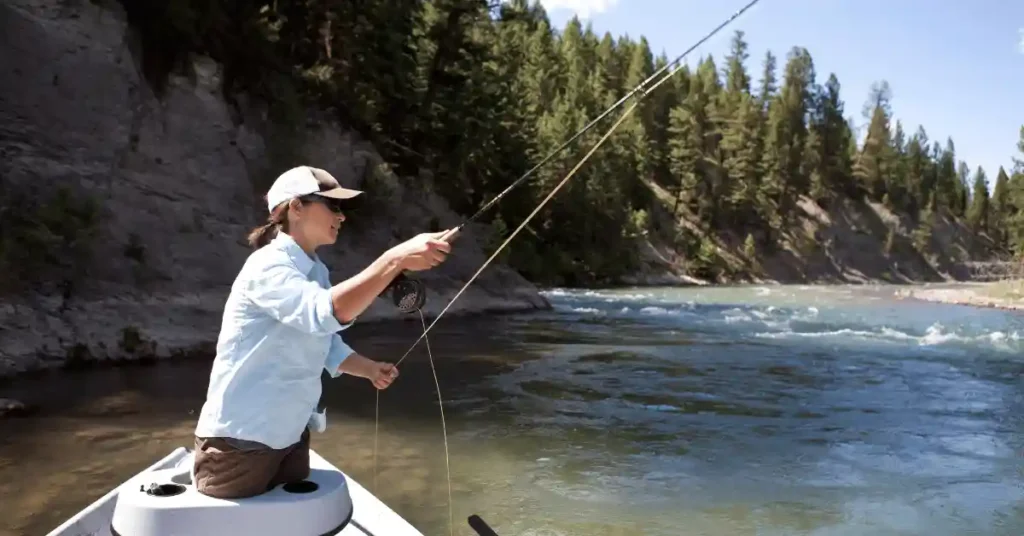
Is fly fishing an art? Well, let me ponder that for a moment. Art, to me, involves creativity, beauty, and emotion.
When I fly fish, I definitely need to get creative—finding the perfect spot, choosing the right fly, it’s all part of the artistry. And there’s no denying the emotional rush when I hook a big one.
Art often emerges from conflict, like when I battle with other anglers for the best spot, or when I’m up against hunger while trying to catch dinner.
Fly fishing is a challenge, both mentally and physically, pushing me to test my skills and determination against the elements.
When I take on fly fishing, I’m embracing a world of conflict. Will I succeed in landing that trophy fish? It’s all part of the artistry of the sport, and I’m eager to see how it unfolds.
The Creativity of Fly Fishing
You might be wondering how fly fishing can be considered creative. Well, let’s see. Picture yourself standing by the river bank, with the fishing rod in your hand and the water in front of you rippling and glistening under the sun. Here, creativity enters the game.
Choosing the right fly to use is one of the first ways creativity comes into play. As a fly fisher, I must study the environment, observe what insects are hatching, and then decide which fly to use.
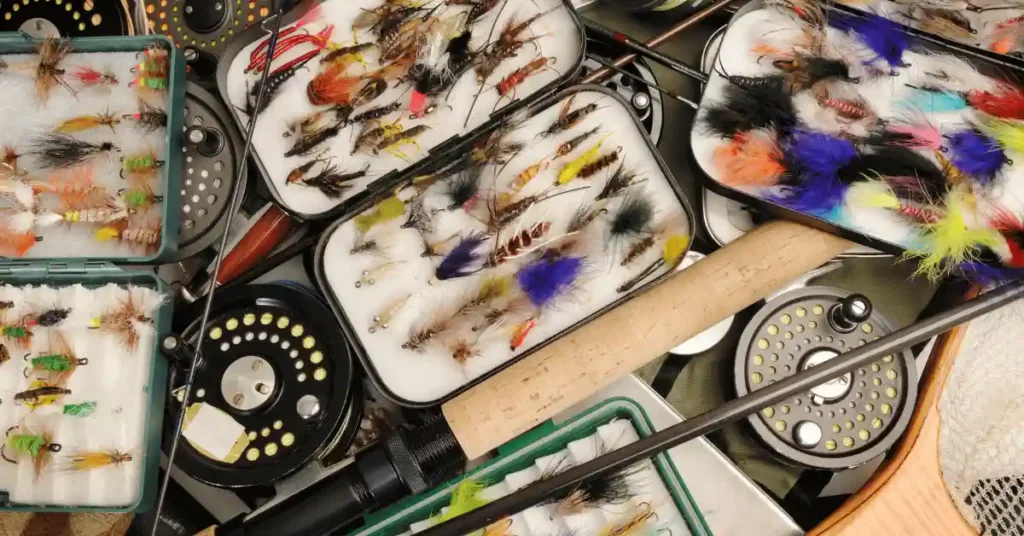
Each choice is a miniature act of creation, influenced by the current season, time of day, and local ecosystem.
Then comes the art of casting. Watching a fly fisher’s cast, you’ll see a delicate balance between power and grace, between precision and fluidity.
I think of it as painting invisible strokes in the air, creating a unique rhythm and pattern with each cast.
Additionally, many fly fishers also indulge in the craft of tying their own flies. This, in itself, is a separate art form. A beautifully tied fly, with its intricate patterns and color combinations, is as much a work of art as any painting or sculpture.
It requires skill, patience, and a detailed understanding of both art and nature.
In essence, the art of fly fishing is not just about making a cast or selecting a fly. It’s about understanding and engaging with the surrounding environment in a creative way.
It’s about using creativity to problem-solve, to strategize, to express oneself. So yes, fly fishing indeed calls upon our creative minds, making it not just a sport, but a form of art as well.
It’s Beauty
The artistry in fly fishing becomes incredibly apparent when you witness the beauty it encapsulates. As I stand by the riverside, I can’t help but feel a sense of awe as I take in the breathtaking view.
The way the sunlight glimmers on the surface of the water, the delicate flutter of the fly as it dances above the water, the graceful arc of the fishing line as it sails through the air—there’s a natural beauty in every element that truly captures the spirit of this practice.
In my eyes, the art of fly fishing is a celebration of nature’s beauty. As a fly fisher, you become part of this living painting.
Your movements, the casting of the line, and even the anticipation of the bite become harmonious elements woven into the grandeur of nature’s canvas. The appreciation of this beauty is subjective, much like how we perceive different forms of art.
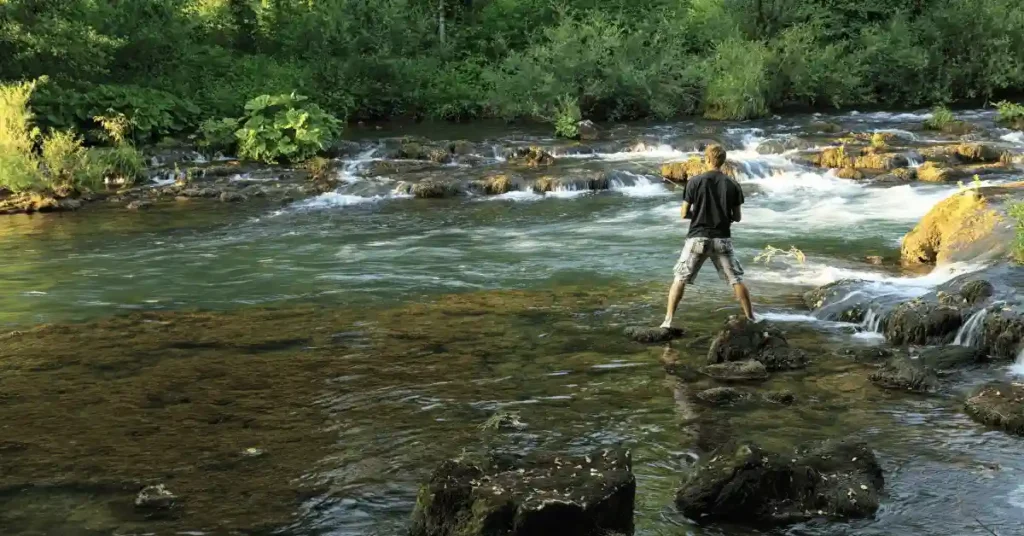
For some, it might be the quiet serenity of the water, for others, it might be the dramatic play of shadows and light on the river surface.
But beyond the visual aesthetics, the true beauty of fly fishing lies in its ability to create an emotional connection. It elicits a sense of peace, fulfillment, and even excitement that’s as captivating as any landscape or masterpiece.
It’s not just about the picturesque scenes or the thrill of catching a fish. It’s the moments of quiet solitude, the rhythmic dance of casting and retrieving, the connection with the water and the life it holds.
This connection, this bond between the fly fisher and nature, is an inherent part of fly fishing’s beauty.
You start to notice the small, often overlooked details—the way the water flows around a rock, the subtle change in the water’s surface indicating a fish’s presence, the myriad colors and patterns on a single fly.
These details enrich the overall experience, painting a vivid picture that stays with you long after you’ve packed up your gear.
Ultimately, the beauty of fly fishing lies not just in the sights, but in the feelings it evokes, the experiences it provides, and the connection it fosters with the natural world.
It’s a multi-sensory, immersive art form that encourages us to observe, to listen, to feel, and most importantly, to appreciate the beauty that surrounds us.
The art of fly fishing is, in essence, a love letter to the wonder and grandeur of nature.
It’s Expression
When I go fly fishing, I feel excited—it’s a passion of mine. Everything I do on the water reflects who I am, my mood, my thoughts. It’s like speaking a language that only nature understands.
In fly fishing, my rod is my brush, and the river is my canvas. I paint my emotions, hopes, and experiences with every cast. When my fly lands perfectly, it’s pure joy—it’s like capturing a moment of harmony between my intention and skill.
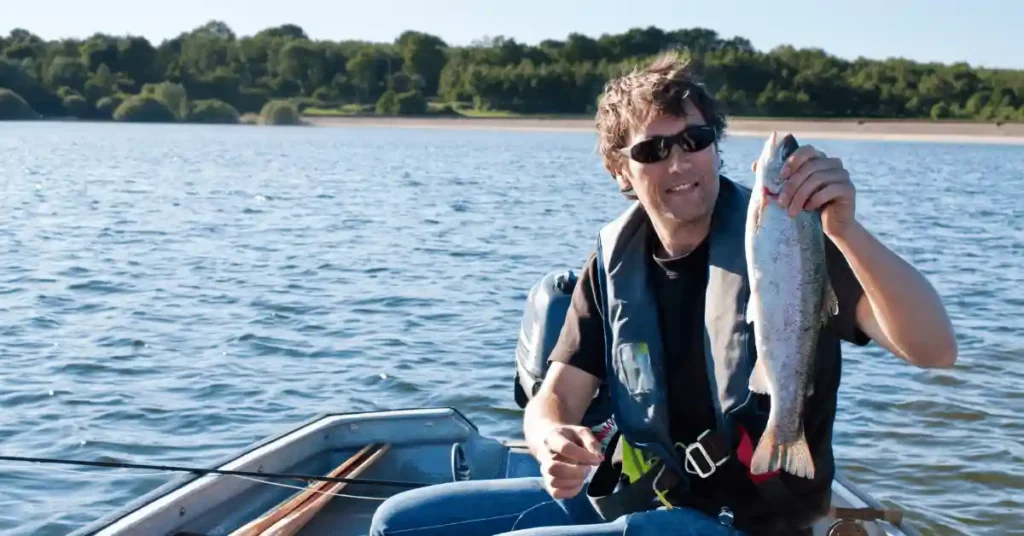
The decisions I make while fishing—the way I read the water, and understand fish behavior—are expressions of my knowledge and dedication.
Each fish I catch symbolizes my connection with nature and the time I’ve spent learning.
But fly fishing isn’t just about catching fish. It’s about the quiet moments, the time spent alone with nature, reflecting on life. These moments allow me to express myself in ways words can’t.
Fly fishing is like a conversation between me and nature. Each cast, each fly, each fish, tells a part of my story. It’s a language of passion, patience, and respect—a beautiful form of expression.
So, next time you’re by the water with your rod, remember: fly fishing isn’t just a hobby, it’s a way to express yourself. It’s your story, shared with the river, the fish, and nature itself. Every moment is a chapter in your unique tale, shaped by the art of fly fishing.
The Calming Effect of Fly Fishing
When I cast my line onto the water, I feel calm. Fly fishing isn’t just about waiting for a bite. It’s like a dance that connects us to ourselves and nature.
Picture standing by a quiet river, hearing the wind and birds. Everything slows down as you focus on casting your line and waiting for a fish. You’re completely present, noticing every detail—the sound of your line, the splash of your fly.
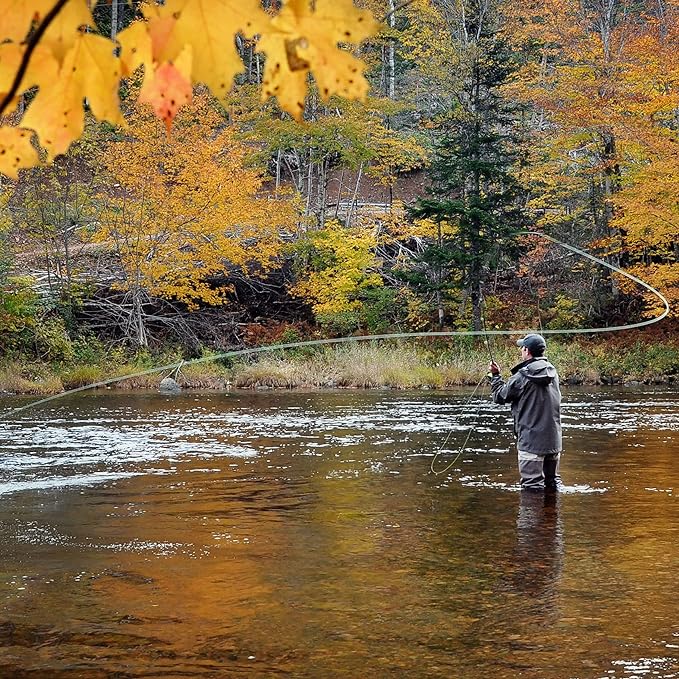
As you cast and reel in, you fall into a soothing rhythm. It’s like meditation, a break from everyday life to reflect and unwind.
Fly fishing teaches mindfulness. It helps us focus on the moment and find peace in nature. It’s a way to escape and connect with the world around us.
It’s not just about catching fish. It’s about finding tranquility in the water, feeling at peace with each cast. Fly fishing is calming and captivating—a journey for the body, mind, and spirit.
A Final Reflection on Fly Fishing as an Art
As I contemplate whether fly fishing qualifies as art, I confidently affirm it does. Fly fishing embodies creativity, beauty, personal expression, and mindfulness, making it a unique and inspiring art form.
I see fly fishing as a performance, a delicate dance between humans and nature, requiring interpretation and adaptation like painting or dancing. The aesthetic experience of fishing—the shimmering water, and lush riverbanks—adds to its artistic appeal.
Fly fishing also serves as a means of self-expression. Each cast, fly selection, and fish caught reflects our individuality, telling a personal story. Moreover, it offers a meditative retreat, fostering mindfulness and a deep connection with nature.
Ultimately, fly fishing enriches our lives, connecting us with nature and fostering personal growth. It’s not just about catching fish but about the experiences and stories created along the way.
So, as you venture out with your fishing rod, embrace the artistic dimensions of fly fishing. Enjoy the creative process, appreciate the beauty, express yourself freely, and find harmony with nature. In essence, fly fishing is an extraordinary, enriching, and deeply satisfying art form.

Meet Ibrahim Khan, an avid angler and author in Fishing Teach. He shares his wealth of knowledge from his 16 years of experiences in fishing. His articles are a captivating blend of practical insights and thrilling tales that invite readers into the enchanting world of fishing.
Ibrahim’s guides are your go-to guide in the realm of fishing on this informational site. Hailing from a coastal paradise, Ibrahim’s passion for angling is the heartbeat of his life.
